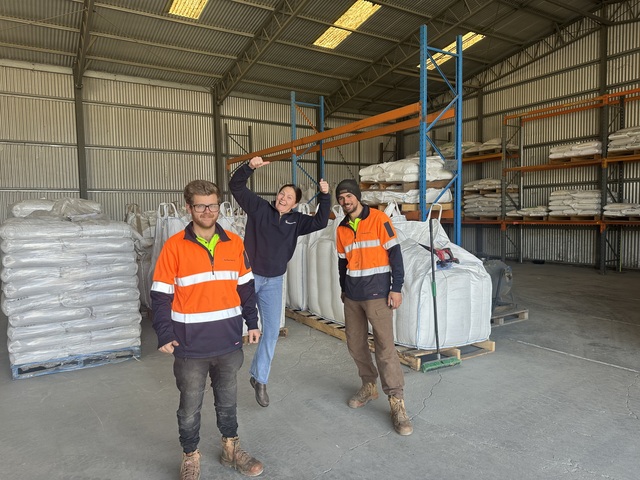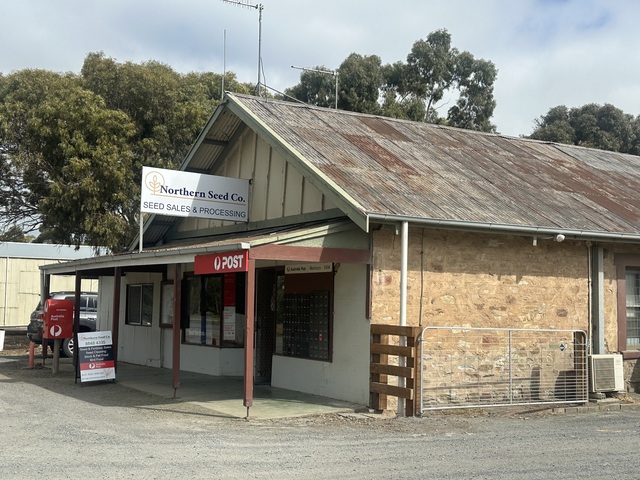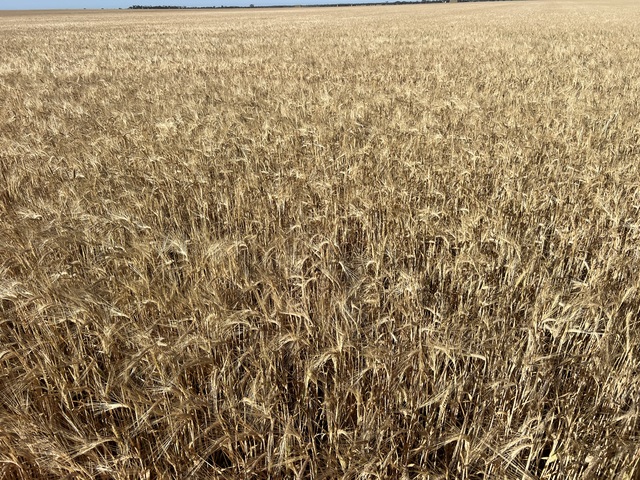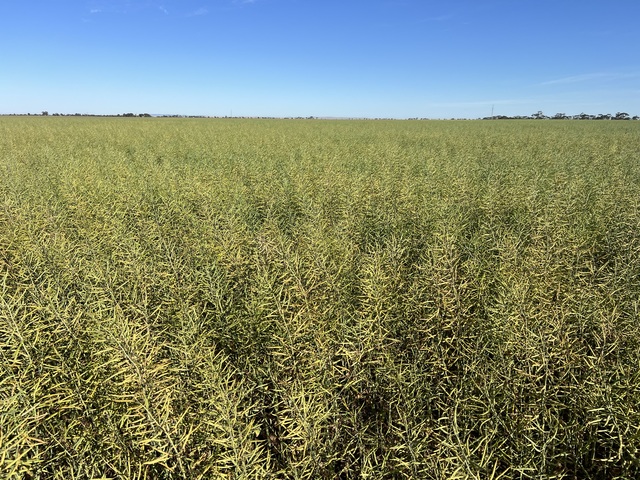
After more than 50 years serving the Mid North, Manoora Seeds Pty Ltd is entering a new chapter.
Long time owners, Bill Vandepeer and Robin Manley have stepped away from the business, handing the reins over to his daughter Tayla and her husband Sam Przibilla.
Under Sam and Tayla’s leadership, the company has been rebranded as Northern Seed Co. to better reflect its vast range of products and services.
In addition to its well-established seed cleaning services, Northern Seed Co. also grows and supplies AGT and InterGrain varieties, as well as vetch, peas, lucerne, oats, ryegrass, medics, and clover seed.
Northern Seed Co. plans to continue with all the good things Manoora Seeds was previously known and loved for, whilst adding a modern and newly energised spin on operations.
The company is also a local agent for Incitec and Wengfu fertilisers, provides a range of pet and animal feed and fodder, and is an agent for Australia Post services out of the front office in Manoora.
These days you will find Bill on farm as he hits the ground running with SA Agricycling – the agricultural plastic drum recycling business formerly run by Noel Bubner.
Downward pressure on global commodities and we really need to drink more beer!
Market report with Paul Lange Centre State Exports
I caught up with Paul last week. It seems that with two consecutive years of below average rainfall and yields, SA farmers will not be seeing any traditional drought pricing. On the upside, hay is coming down and whilst yields are well below average, the quality has been outstanding. Harvest in the Mid North is getting very close and after the weekend’s warm weather, barley harvest and canola windrowing will be on in earnest.
Yet another trying season here in South Australia with conditions being challenging in most areas, and unfortunately for some, as bad or worse than last year.
Modern farming techniques and practices has given many a chance of a crop this year, with some areas looking like average or even above average yields. With many regions receiving less than 200mm year to date, and with some as low as 100mm, it is astonishing we have a crop at all.
Many regions are faring better than last year. South Australia is once again the ‘poor cousin’ in Australia. Queensland, Northern New South Wales, and Western Australia are all in line for exceptional, if not record, crops. Southern NSW and Victoria are like South Australia, although they had a much better start to the season.
With much of the northern hemisphere having a good crop, and every major exporter in the world having a reasonably good season, we have hit an oversupply with most commodities.
Wheat market: International pressure has had a dramatic impact on our wheat price – despite coming off the back of a drought market locally. Given there has only been a small amount of wheat forward sold, and farmers generally will have cashflow requirements, it will be interesting to see how the market weathers the storm over harvest.
Barley market: Barley has held up better than wheat. China re-entering the Australian barley market has helped build a base to work from. Further to this, a smaller barley crop from Turkey and the Black Sea has meant Middle Eastern markets have had to work a little bit harder too. The general outlook for malt barley is flat – the world is simply not drinking enough beer! Alcohol consumption in general continues to decline, impacting wine consumption as well. Strong livestock prices will also be supportive of feed barley prices locally.
Canola market: This remains relatively strong, particularly for the non-GM canola we send to Europe. Supply of non-GM canola is much tighter than GM canola and is reflected in the price. Political tension between Canada and China, and tariffs with the US, has impacted Canadian demand. As a result, their predominantly GM crop is looking for alternative markets and is priced to compete. The Chinese government has recently approved the execution of five cargos of canola from Australia, which we are hopeful will support our GM canola market. The cargos that have been approved are being regarded as a trial, so we are yet to see a significant impact on our local market.
Lentil market: This is probably the biggest talking point. We are up against a weight of numbers. Canada’s lentil crop is big with reports of record, or near record, crops. Albeit not our preferred destination, India is the biggest consumer of lentils in the world. They are also big lentil producers, and if India has a good monsoon, they have a good lentil crop – and by all report’s, it was a good monsoon year. And then there is little old Australia. We have managed to roughly triple our lentil production in about five years. Last year we grew around 1.1mmt, and that was during a drought in SA and Western Victoria. This year it could be as much as 2mmt, which is enormous. With the largest producers and exporters having huge crops, there is probably no real surprise we are seeing lentil numbers back around $600/mt. There are a lot of lentils to be sold locally, so we may see more pressure on pricing and possibly even get to the point where prices are limited completely. Fortunately, the bulk shipment market seems to be active, which will give us our best chance to shift all the lentils, but it is safe to say we are in unchartered territory with a crop this big.
With crops starting to turn, harvest is right around the corner. Hopefully everyone has a safe and relatively successful harvest.








